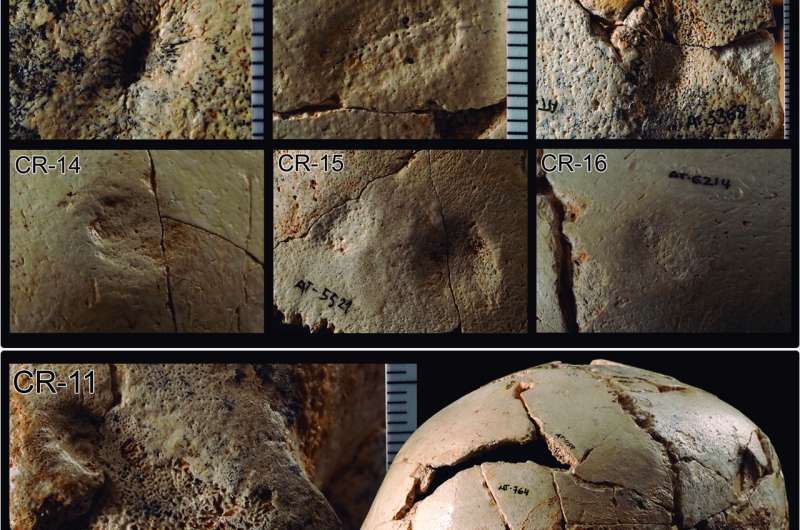Study presents a taphonomic-forensic analysis of the skulls from the Sima de los Huesos site

Nohemi Sala, a researcher at the Centro Nacional de Investigación sobre la Evolución Humana (CENIEH), has just published a paper in the journal The Anatomical Recordthat catalogs the modifications to the largest known collection of skulls and jaws in the whole of human paleontology, found at the Sima de los Huesos site (Atapuerca, Burgos), and including processes before death (antemortem), at moments close to death (perimortem), and after death (postmortem), for about twenty individuals.
This collection consists of more than 2,000 fragments that have been recovered progressively every summer for more than thirty years, during the excavation campaigns in the Sierra de Atapuerca. The fragments are then fitted together like the pieces of a jigsaw puzzle.
"So far, we have 20 individuals represented by their skulls and jaws of the 29 we estimate on the basis of the dentition. This huge number of specimens has made studying the forensic taphonomy of a fossil population possible, something that would be unthinkable outside the walls of this chamber in Burgos," says Sala.
Taphonomy is the paleontological discipline that analyzes fossils to find out what happened to the individuals between their death and the moment of excavation. "By looking at points such as marks and fractures in the fossils, we can decipher processes, as though we were conducting an autopsy," says the lead author of this study, which is part of a special journal issue dedicated to the Sima de los Huesos.
Lesions in life
A total of 57 cranial lesions with signs of healing have been documented in 20 individuals at the Sima de los Huesos, which means that these injuries definitely happened before death. These lesions of circular morphology, which affect the cranial vault in nearly all the individuals (17 of the 20 specimens), have been interpreted as blunt force traumas that caused depression of the bone in the different skull regions.
An analysis of the incidence of these blows was conducted at the population level, and it was found that they affect individuals of all ages and sexes, and so there is no specific preferential group in this fossil population. These data indicate that this group was exposed to generalized episodes leading to nonfatal impacts in the cranial region.
It was also possible to verify the presence of a new individual with perimortem cranial fractures, meaning that the injury took place at a moment close to death. This means that there are now nine individuals with evidence of cranial traumas that could have been lethal. One of the best-known cases is that of skull 17, published some years ago in the journal PLOS ONE.
Cases of violence
However, the most striking point of the analysis is that, of the nine individuals with perimortem traumas, six had penetrating fractures (circular holes of a similar size) in the left nuchal region. This pattern is so recurrent that it leaves little room for interpretation. The location is not what would be expected for accidental traumas, and is more compatible with intentional lesions, so these injuries are interpreted as possible cases of violence, just as with skull 17.
Finally, postmortem modifications were documented and it was possible to show that, following these individuals' deaths, only alterations characteristic of cave interior environments were produced: fracturing due to sediment pressure and precipitation of minerals (calcite and oxides of iron and manganese). No marks attesting to long-distance transport of the remains inside the cavity have been documented. "We can interpret this to mean that the skeletons arrived at the cave complete, and shortly after death," says Sala.
More information: Nohemi Sala et al, Taphonomic‐forensic analysis of the hominin skulls from the Sima de los Huesos, The Anatomical Record (2022). DOI: 10.1002/ar.24883
Journal information: PLoS ONE
Provided by CENIEH





















